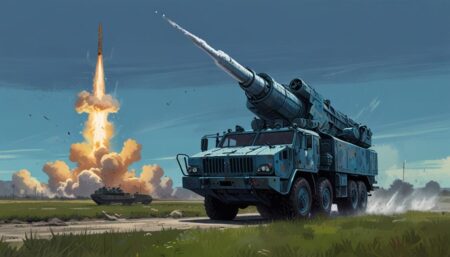In a significant escalation of hostilities, the Ukrainian Air Force has destroyed two Russian warships in Crimea using Storm Shadow cruise missiles, marking a new phase in the conflict with broader geopolitical implications.
The Ukrainian Air Force significantly impacted the Russian Black Sea Fleet by destroying two crucial warships and targeting vital infrastructure in Sevastopol, Crimea, utilizing at least three Storm Shadow cruise missiles. The operation was part of a series of escalating encounters between Ukraine and Russia, with the latter launching its third major missile assault on Ukraine within a four-day span. This assault included cruise missile attacks initiated by Russian strategic bombers, affecting Kyiv and leading to an extended air alert in the capital. Poland also reported a violation of its airspace during these attacks.
The destruction of these 112-metre-long warships represents a considerable blow to Russian military ambitions in the region, underpinning Ukraine’s continued defiance and operational capabilities amidst ongoing conflict.
Concurrently, the geopolitical landscape is further complicated by Russian President Vladimir Putin’s nuclear deterrence rhetoric, aimed at influencing NATO and American support for Ukraine. This approach, part of broader intrawar deterrence strategies, seeks to navigate the conflict’s course without resorting to nuclear warfare. In response, Ukrainian forces have tactically targeted Russian naval capabilities and solidified their deterrence posture by maintaining strategic corridors and alliances, notably with NATO members.
Amid these developments, Ukrainian President Volodymyr Zelensky strongly denied Russian allegations tying Ukraine to a concert hall attack in Moscow, dismissing them as groundless and offensive. The Ukrainian military intelligence also refuted claims of capturing attackers attempting to flee into Ukraine, highlighting the implausibility given the heavy military confrontations along the Russo-Ukrainian border. These incidents have intensified the conflict’s dynamics, spotlighting the internal challenges within Russia and the broader geopolitical ramifications.

















